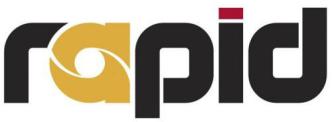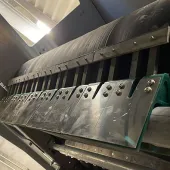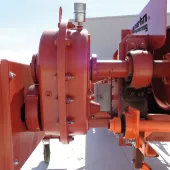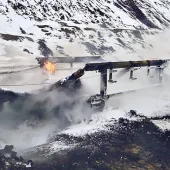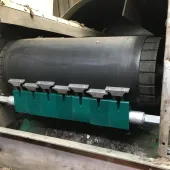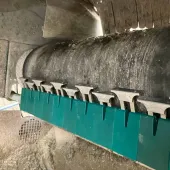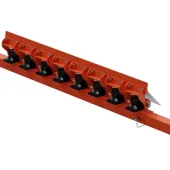Martin Engineering introduce washbox cleaning system
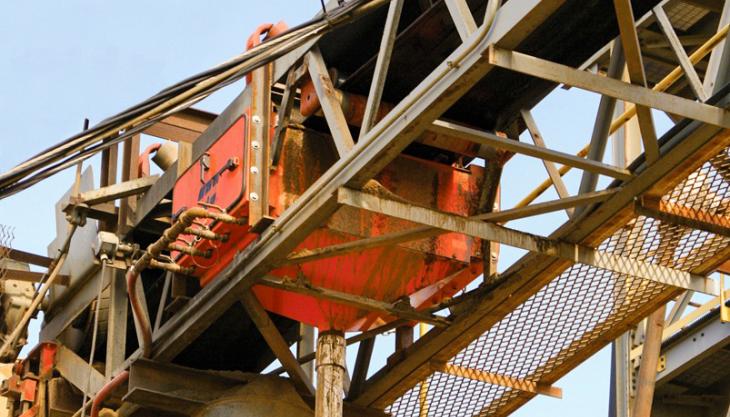
Washbox conveyor belt cleaner designed to remove difficult carryback including sticky material and fines
MARTIN Engineering have introduced a secondary cleaning system specially designed to remove much of the carryback left on a conveyor belt, including adhesive materials and fines lodged in surface divots and valleys. The Martin Washbox cleaning system combines water sprays and secondary cleaning blades in an enclosed, self-contained unit, and drains residues safely away from the work area.
Operators who have installed the system have reported significantly reduced dust and spillage, resulting in a safer workplace and longer belt life with considerably less downtime.
‘We design systems to eliminate nearly all carryback issues faced by every industry we serve,’ said Dan Marshall, product engineer for Martin Engineering. ‘After extensive before and after testing, we developed the Martin Washbox cleaning system to complement our standard products in some applications, to further improve the service life of belts, idlers, pulleys and cleaning blades.’
Available in two configurations; a dual-cleaner system and a single-cleaner version, the units are mounted on the conveyor frame directly after the return idler to ensure belt alignment throughout the cleaning process and to allow enough time for moisture evaporation on the return trip.
Passing through a powder-coated steel box with top rollers, the belt is gently washed by spray bars equipped with 10 to 30 nozzles delivering pressure of up to 60 psi (4.14 bar) while using up to 54 gal/min of water.
The belt is then scraped clean by a polyurethane blade and/or a urethane squeegee blade set on a tensioner for a tight and consistent blade-to-belt seal. All residue drains safely through an outlet funnel below the washbox, which can lead to a disposal unit or settling pond/vessel for returning material back into the process.
Built for medium-to-heavy-duty applications, the dual-cleaner system is equipped with three rollers, four spray bars, two Martin inspection doors and two polyurethane secondary cleaners.
Recommended for use behind a primary cleaner on the face of the head pulley, the colour-coded, high-performance urethane secondary cleaners can be specified for acidic or high-temperature materials. Optional tungsten carbide or stainless steel tips increase the effectiveness and durability of the blade against difficult or rocky carryback. The unit can be specified from 30in to 60in in length and 44.4in to 53in in height.
The Martin single-cleaner system houses a roller, secondary blade and spray bar, which are accessed by inspection doors on either side of the enclosure. Suitable for tight spaces on light-to-medium-duty applications, the compact unit is 15in long and can be specified from 34in to 42.2in in height. It is recommended for use in tandem with a pre-cleaner and operators have found the single units work well for both indoor and outdoor applications where walkways need to be kept free of clutter and pooling.
Operators concerned with the amount of moisture remaining on belts have the option of adding a squeegee roller, which has proven to effectively address wet carryback. Positioned between top rollers, it lifts the belt slightly and ‘flattens’ the layer of water on the surface from an average of 50 microns to 20 microns (in thickness), allowing for better evaporation.
Dan Marshall commented: ‘Our goal is to help facilities exceed environmental and safety workplace standards. By engineering a self-contained and sealed unit with simple working components that are easy to access and maintain, we have created a solution that could benefit nearly all of our bulk-handling customers.’


